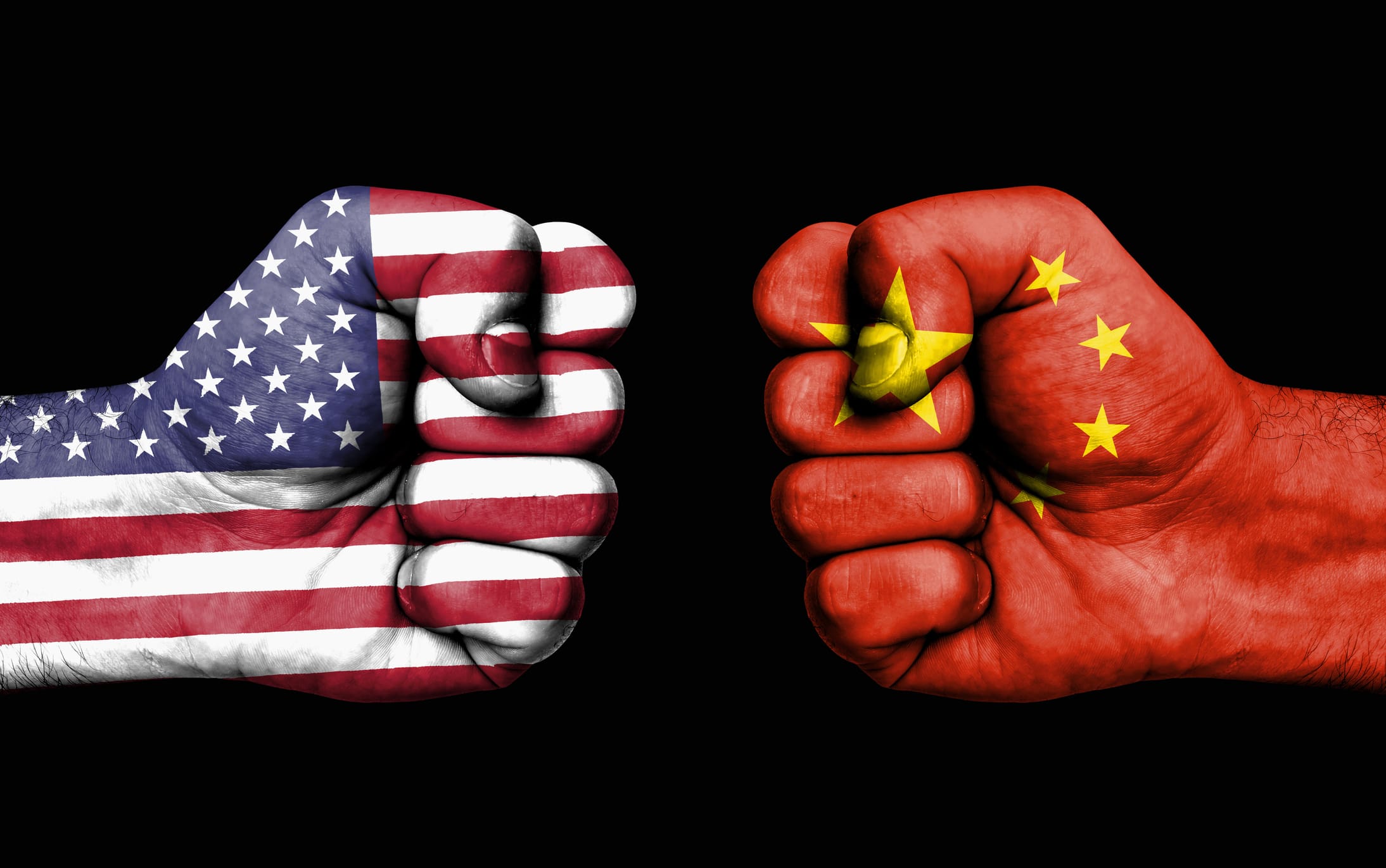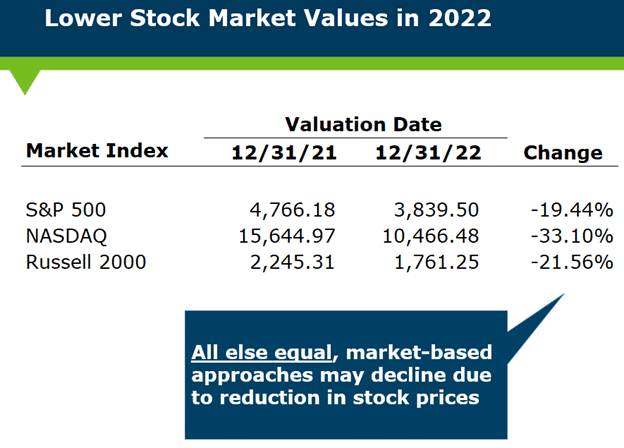Is A New Cold War Between The U.S. And China Inevitable?

Table of Contents
The relationship between the United States and China is increasingly tense, prompting serious concerns about the possibility of a new Cold War. This complex issue involves a multitude of factors, from fierce economic competition and technological rivalry to fundamental ideological differences and aggressive geopolitical maneuvering. This article will delve into these key areas to assess the probability of a new Cold War and explore potential pathways towards de-escalation.
Economic Competition and Trade Wars
The economic relationship between the U.S. and China is characterized by intense competition and recurring trade disputes. This has led many to question if an all-out trade war is inevitable.
The Trade Deficit and Tariff Battles
The history of trade disputes between the U.S. and China is long and complex, marked by significant trade imbalances and escalating tariff battles. The U.S. has consistently run a large trade deficit with China, fueling accusations of unfair trade practices and intellectual property theft. This has led to the imposition of numerous tariffs on Chinese goods, triggering retaliatory measures from China.
- Examples of specific tariffs: Tariffs on steel and aluminum, tariffs on various consumer goods.
- Impact on businesses: Increased costs for businesses, supply chain disruptions, job losses in some sectors.
- Retaliatory measures: Chinese tariffs on U.S. agricultural products and other goods.
Technological Rivalry and Supply Chains
Technological rivalry is another major flashpoint in the U.S.-China relationship. Competition in crucial technologies like 5G, semiconductors, and artificial intelligence is intense, with both countries striving for technological dominance. This rivalry extends to efforts to control supply chains, ensuring access to critical components and technologies.
- Examples of specific technological advancements: China's advancements in 5G technology, U.S. dominance in semiconductor design.
- Implications for national security: Concerns about technology dependence, potential for espionage and sabotage.
- Efforts to secure supply chains: Government initiatives to bolster domestic production and diversify supply chains.
Investment Restrictions and Economic Sanctions
Both the U.S. and China have increasingly utilized economic sanctions and investment restrictions as tools of geopolitical leverage. This includes restrictions on foreign investment, capital controls, and sanctions targeting specific companies and individuals.
- Specific examples of sanctions: U.S. sanctions on Chinese companies involved in human rights abuses, Chinese restrictions on foreign investment in sensitive sectors.
- Effects on global markets: Uncertainty and volatility in global markets, disruption of international trade and investment flows.
Geopolitical Tensions and Military Buildup
Geopolitical tensions between the U.S. and China are escalating, fueled by territorial disputes and a significant military buildup on both sides.
The South China Sea Dispute and Regional Alliances
The South China Sea dispute, involving competing territorial claims among several nations, is a major source of tension. China's assertive actions in the region, including the construction of artificial islands and military deployments, have led to increased regional tensions and the strengthening of military alliances.
- Key players involved: China, Vietnam, the Philippines, Malaysia, Brunei, Taiwan, and the United States.
- Military exercises: Increased military exercises and naval deployments in the South China Sea.
- Potential flashpoints: Incidents involving Chinese coast guard vessels and other nations' ships.
Taiwan and Cross-Strait Relations
The status of Taiwan is a particularly sensitive issue, with China claiming Taiwan as its own territory and threatening military intervention if necessary. The U.S. maintains a policy of "strategic ambiguity" regarding its response to a Chinese attack on Taiwan, which adds to the uncertainty.
- China's position on Taiwan: China views Taiwan as a breakaway province and insists on its eventual reunification, by force if necessary.
- US policy towards Taiwan: The U.S. provides Taiwan with defensive weapons and maintains unofficial diplomatic ties.
- Potential scenarios: A range of scenarios, from a limited military conflict to a larger-scale war.
Nuclear Weapons and Arms Race
The possibility of a nuclear arms race between the U.S. and China is a concerning development. Both countries possess significant nuclear arsenals, and any escalation could have catastrophic consequences.
- Current nuclear arsenals: Both the U.S. and China possess substantial nuclear arsenals, though the U.S. arsenal is significantly larger.
- Potential for escalation: The risk of accidental escalation or miscalculation is always present.
- Arms control treaties: The lack of comprehensive arms control treaties between the two countries adds to the risks.
Ideological Differences and Information Warfare
Fundamental ideological differences and the escalating use of information warfare further contribute to the strained U.S.-China relationship.
Diverging Political Systems and Values
The U.S. and China have fundamentally different political systems and values. The U.S. champions democracy and individual liberties, while China operates under a one-party authoritarian system. These differences lead to disagreements on human rights, governance, and international norms.
- Key differences in political systems: Democracy versus authoritarianism, freedom of speech versus state control of information.
- Human rights concerns: Concerns about human rights violations in China, including the treatment of Uyghurs and suppression of dissent.
- Differing approaches to governance: Rule of law versus party control.
Propaganda and Disinformation Campaigns
Both the U.S. and China engage in propaganda and disinformation campaigns, often targeting each other and their respective allies. This information warfare exacerbates tensions and makes it more difficult to find common ground.
- Examples of disinformation campaigns: Spread of misinformation about the origins of COVID-19, cyberattacks targeting government institutions.
- Impact on public opinion: Erosion of trust in institutions, increased polarization.
- Efforts to combat misinformation: Government initiatives to improve media literacy and counter disinformation.
Conclusion
The question of whether a new Cold War between the U.S. and China is inevitable is complex and multifaceted. While significant economic, geopolitical, and ideological tensions exist, a direct military confrontation is not a foregone conclusion. The future trajectory of the relationship depends heavily on the strategic choices made by both governments and the global community.
Understanding the intricacies of U.S.-China relations is crucial to navigating the challenges ahead. By continuing to explore and analyze the potential for a new Cold War, we can work towards de-escalation and build a more stable and peaceful international order. Continue to learn more about the complexities of this important relationship – stay informed on the ongoing developments in the U.S.-China dynamic and actively participate in discussions about building a more peaceful future.

Featured Posts
-
 Are High Stock Market Valuations A Concern Bof A Says No
Apr 22, 2025
Are High Stock Market Valuations A Concern Bof A Says No
Apr 22, 2025 -
 Razer Blade 16 2025 Ultra Thin Laptop Review Performance And Price Analysis
Apr 22, 2025
Razer Blade 16 2025 Ultra Thin Laptop Review Performance And Price Analysis
Apr 22, 2025 -
 Ryujinx Emulator Project Ends Official Statement On Nintendos Involvement
Apr 22, 2025
Ryujinx Emulator Project Ends Official Statement On Nintendos Involvement
Apr 22, 2025 -
 How Chainalysis Acquisition Of Alterya Will Shape The Future Of Blockchain
Apr 22, 2025
How Chainalysis Acquisition Of Alterya Will Shape The Future Of Blockchain
Apr 22, 2025 -
 Pope Francis Dead At 88 Following Pneumonia Battle
Apr 22, 2025
Pope Francis Dead At 88 Following Pneumonia Battle
Apr 22, 2025
